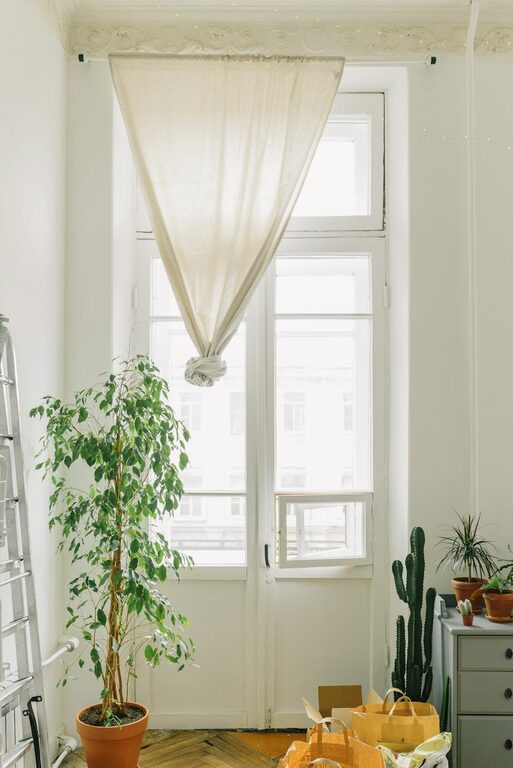Bringing plants into your home is a wonderful way to refresh your living space. Not only do plants add a splash of natural color and texture, but they can also improve air quality and boost your mood. Whether you’re a seasoned plant parent or just starting out, this guide will help you choose and care for plants that suit your home and lifestyle.
Why Add Plants to Your Home?
Plants are more than just decorations. Here are some benefits that make them a great addition:
– Improved Air Quality: Many indoor plants help filter toxins and produce oxygen.
– Stress Reduction: Being around greenery can lower stress and promote relaxation.
– Visual Appeal: Plants bring natural beauty and a sense of calm to any room.
– Creativity and Focus: Studies suggest plants can enhance productivity and creativity.
– Humidity Control: Some plants release moisture into the air, helping with dry indoor environments.
Choosing the Right Plants for Your Home
Selecting plants that match your space and level of care is essential. Consider the following factors:
1. Light Conditions
Different plants require different light levels. Assess the amount of sunlight each room receives:
– Bright, Direct Light: South or west-facing windows.
– Bright, Indirect Light: East-facing or shaded south windows.
– Low Light: Rooms with no direct sunlight.
2. Space Available
Measure the area where you want to place plants. Some plants grow tall and wide, while others stay compact.
3. Maintenance Level
Be honest about how much time and effort you can spend. Some plants need daily care, while others thrive with occasional watering.
Easy Houseplants to Get Started With
For beginners, here are some hardy plants that can tolerate a range of conditions:
– Snake Plant (Sansevieria): Tolerates low light and infrequent watering.
– Pothos: Grows well in low to medium light and is very forgiving.
– Spider Plant: Adapts to many light levels and helps purify air.
– ZZ Plant: Very low maintenance and drought tolerant.
– Peace Lily: Prefers medium light and adds lovely white blooms.
Creative Ways to Display Plants
How you display your plants affects the overall ambiance. Here are some ideas:
1. Use Plant Stands and Shelves
Elevate smaller plants using multi-tiered stands or wall-mounted shelves. This adds dimension and keeps surfaces organized.
2. Hang Plants
Macramé hangers or hanging pots are perfect for trailing plants like pothos or spider plants, and free up floor and table space.
3. Mix Plant Sizes
Combine tall floor plants with small tabletop specimens to create a balanced and interesting setup.
4. Incorporate Decorative Planters
Choose pots that complement your decor style—ceramic, terracotta, or woven baskets add texture and color.
5. Create a Plant Corner
Designate a nook or corner in your home for grouping plants, turning it into a mini indoor garden.
Tips for Caring for Your Indoor Plants
Keeping plants healthy requires consistent care. Follow these general guidelines:
– Watering: Most plants prefer the soil to dry out slightly between waterings. Overwatering is a common mistake.
– Humidity: Many houseplants enjoy humidity. Mist leaves occasionally or use a humidifier if your home is dry.
– Feeding: Fertilize plants every 4-6 weeks during the growing season using a balanced houseplant fertilizer.
– Cleaning: Dust leaves gently to allow for better photosynthesis.
– Repotting: Move plants to larger pots when roots outgrow the current container, usually every 1-2 years.
Seasonal Plant Care
Adjust your plant care routine based on the season:
– In winter, plants tend to grow slower and need less water.
– During spring and summer, increase watering and feeding as plants grow actively.
Troubleshooting Common Issues
If your plants look unhealthy, check for these common problems:
– Yellowing Leaves: Could indicate overwatering or poor drainage.
– Brown Leaf Tips: Often caused by low humidity or underwatering.
– Pests: Look for tiny insects or sticky residue; treat with insecticidal soap if needed.
Final Thoughts
Refreshing your home with plants is an enjoyable and rewarding project. Start with a few easy-care plants, experiment with displays, and develop a care routine that suits your lifestyle. Over time, your indoor garden will grow, making your home greener, fresher, and more inviting.
Happy planting!



